Role-playing games (RPGs) have long been a bastion of fantasy escapism, providing players with immersive worlds built on medieval European traditions. These games offered heroic adventures, grand quests, and clearly defined roles, drawing from historical and mythological sources. For decades, RPGs were a male-dominated hobby, not by design, but because of the nature of the themes they explored—chivalry, knighthood, and combat.
But over the years, feminist activists and ideological interlopers have infiltrated the RPG space, reshaping it to fit their worldview. What began as a hobby focused on adventure and strategy has turned into a battleground for identity politics, gender theory, and forced inclusivity.
Do an online search for gender in role-playing games, and you’ll find that feminist and queer ideology has dominated intellectual discourse. Academic papers overwhelmingly focus on abstractions like sexuality, queerness, and inequality, all framed around combating so-called sexism and heteronormativity. This analysis is entirely one-sided, ignoring biological sex differences and the fact that RPGs were originally a male space.
The results have been disastrous. The more developers pander to diversity, equity, and inclusion (DEI) initiatives, the more core players abandon the genre. Sales decline, engagement drops, and companies find themselves walking back their commitments—but the damage is already done. This article explores how RPGs were subverted, how male gamers lost control of their space, and why this ideological assault mirrors larger cultural battles.
The Importance of Male Heroism in Storytelling
Throughout history, folk tales, myths, and fairy tales have provided young men with role models of heroism, courage, and sacrifice. Great authors like J.R.R. Tolkien, C.S. Lewis, and G.K. Chesterton recognized the need for heroic male figures in storytelling, as these characters instilled virtues of honor, duty, and resilience. Such stories were not merely entertainment—they were cultural tools for shaping strong, noble men who understood their responsibilities as protectors and leaders.
Joseph Campbell’s Hero’s Journey further emphasized how heroic narratives were central to the development of young men across all cultures. From the knights of Arthurian legend to the lone warriors of epic sagas, these stories helped boys internalize the values of perseverance, bravery, and self-sacrifice. But as feminist ideology seeped into popular culture, the importance of male heroism was slowly eroded, replaced by narratives that downplayed or ridiculed traditional masculinity.
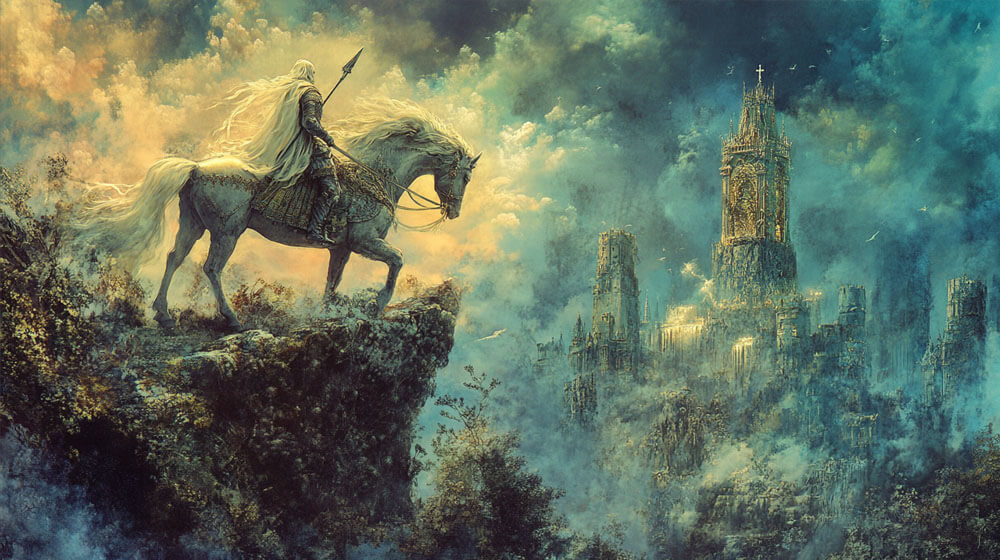
Feminist influence on RPGs mirrored this cultural shift. In early tabletop RPGs and classic MMORPGs, male heroes were central figures, driving the story forward with acts of valor and strength. But over time, the need for a uniquely male heroic arc was dismissed as outdated, leading to the erasure of masculine ideals from fantasy storytelling. This shift not only weakened the depth and authenticity of RPG narratives but also stripped male players of aspirational figures to identify with, leaving them with uninspired, homogenized characters that lacked the epic journeys of their predecessors.
The removal of male heroism from RPGs has contributed to the genre’s increasing detachment from its roots in folklore and mythology. Just as Robert Bly argued in Iron John, young men today are starved for heroic figures who represent strength, wisdom, and adventure. Yet, instead of embracing these traditional narratives, modern RPGs have opted for forced egalitarianism and ideological conformity, stripping fantasy of its very essence. If RPGs are to regain their former glory, they must reintroduce the timeless principles of heroic masculinity that made fantasy storytelling compelling in the first place.
How RPGs Are Based on Medieval European Fantasy Tropes
From the beginning, RPGs have been deeply rooted in medieval European mythology, history, and literature. They were not created in a vacuum but drew inspiration from chivalric romances, feudal societies, and the hero’s journey—all of which emphasize traditional masculine virtues.
- Kings and knights ruled the land. War and conquest were common.
- Good versus evil, the supernatural, and religion were woven into the thread of daily life
- The Catholic Church shaped medieval Europe, and many fantasy settings incorporate similar divine structures.
- Gender roles were clearly defined. Men fought battles, ruled kingdoms, and led armies, while women managed households, healed the wounded, and played supporting roles.
These were not arbitrary structures—they were the reality of medieval society. RPGs reflected these themes because they were historically grounded. However modern developers, influenced by feminism and intersectional ideology, see this structure as a problem to be fixed rather than a core component of the genre.
The Failure to Acknowledge Gender Differences in RPGs
The infiltration of RPGs was not only driven by feminist activists but also by the unconscious assumptions introduced into the cultural zeitgeist by feminist ideology. One of the most damaging assumptions was the false equation of men and women as equals in every capacity, completely ignoring biological differences between the sexes.
In the early days of Dungeons & Dragons, there were minor statistical differences between male and female player characters. These differences were eventually removed, not because of player demand or game balance concerns, but because male designers feared being labeled sexist if they acknowledged reality. This was a cultural shift, not a mechanical one—feminist ideology had so deeply seeped into the consciousness of Western society that even game developers felt compelled to make males and females identical in ability.
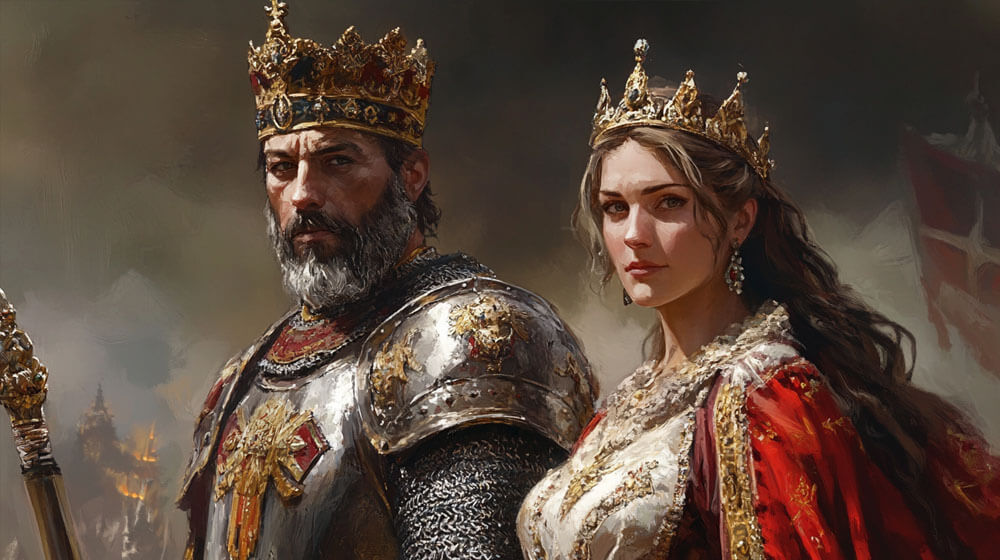
The refusal to acknowledge gender differences was a loss for the RPG genre. Biological distinctions between men and women could have created rich opportunities for role-playing and added depth to combat mechanics, world-building, and storytelling. Instead of embracing Vive la différence, as the French say—celebrating the unique qualities of both sexes—RPG developers erased them entirely, flattening a fundamental part of human experience.
This trend carried over into MMORPGs. EverQuest, released in 1999, had no statistical differences between male and female player characters, following the cultural expectations set by tabletop RPGs. However, at the time, the game’s NPC world still reflected traditional roles—there were no female guards in cities, and medieval gender dynamics were mostly preserved.
World of Warcraft, released just five years later, went a step further in pushing feminist ideology into game design. Female guards were now common in Azeroth, while night elf society remained a matriarchy, and female characters were given more representation in every role across all factions. The human kingdom of Stormwind—a clear medieval analog—had an abundance of female soldiers, leaders, and authority figures, making it an anachronistic reflection of modern progressive ideology rather than a believable medieval world.
The loss of gendered storytelling in RPGs, along with the push to erase any distinction between men and women in both character creation and world-building, has made these games less immersive and less reflective of historical and fantasy traditions. Rather than embracing the natural differences between the sexes to create engaging and meaningful gameplay, developers have chosen to flatten those differences to satisfy an ideological agenda rather than enhance the player experience.
The Distinct Roles of Men and Women in Medieval Europe
To truly appreciate the allure of medieval RPGs we need to examine the reality of those times. Medieval Europe was deeply structured by the feudal system, and gender roles were not a matter of opinion but a necessity for survival. Life was brutally short and unforgiving, with an average life expectancy of around 30-40 years, though this figure is skewed by high infant mortality rates, which could reach 30-50% before the age of five. For those who survived childhood, life was still a constant battle against disease, famine, and war. In such a world, societies could not afford to experiment with gender roles; they assigned roles based on biological strengths because efficiency and survival demanded it.
Men were warriors, rulers, and laborers. They fought in wars, worked the land, and built civilizations. The battlefield and the farm were places of extreme physical exertion, requiring the upper-body strength, endurance, and testosterone-driven aggression that men naturally possess. The average medieval man was significantly stronger than the average medieval woman, with greater muscle mass, bone density, and resistance to physical trauma.
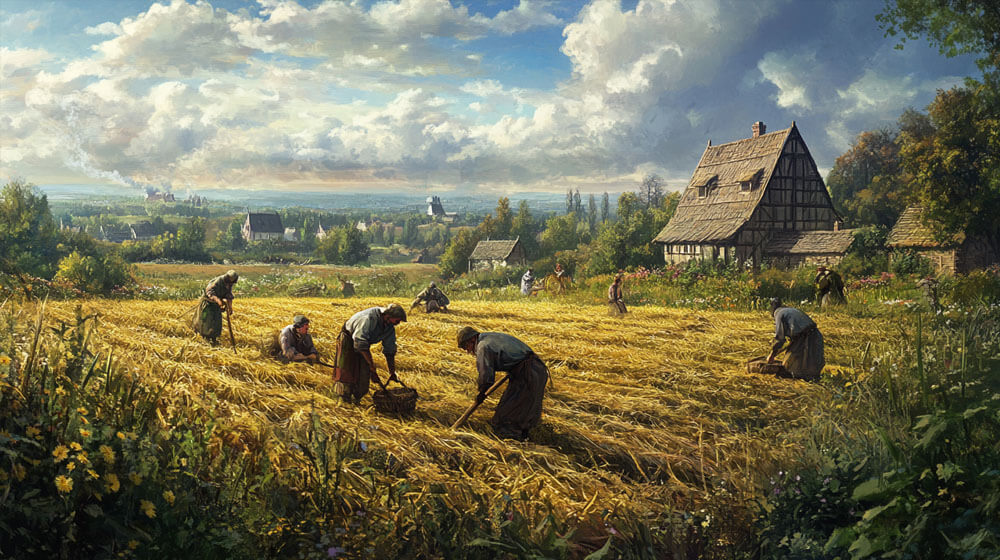
War was a brutal affair, fought in close quarters with heavy swords, shields, and armor that could weigh 50-70 pounds. Even the archers of medieval armies required immense strength—the English longbow, for example, had a draw weight of 100-150 pounds, something only a physically trained man could reliably handle. The demands of combat, combined with the extreme physical labor required in agriculture and construction, made men the natural choice for these roles.
Women were caregivers, healers, and household managers. Their roles were no less essential but were suited to their own biological strengths. Women were the bearers and nurturers of children, responsible for raising the next generation and managing households, which were centers of production in their own right. The medieval world was dominated by high maternal mortality rates—one in three women could expect to die from complications related to childbirth. With such high stakes, women had to be protected, as their survival meant the survival of future generations. Women’s roles in healing and herbal medicine also ensured the well-being of communities, making them indispensable in ways that complemented men’s contributions rather than competing with them.
This was not oppression—it was biological reality. Men and women had different strengths, and society functioned best when each sex played its natural role. These clear distinctions allowed civilizations to flourish despite the brutal conditions of the time. Early RPGs respected these historical realities, embracing medieval settings where warriors, knights, and rulers were naturally men, while women played vital but distinct supporting roles.
As feminism took hold, these distinctions were erased in favor of a forced egalitarianism that ignored biological and historical truths, making modern RPG settings feel inauthentic, disconnected from their roots, and alien to the players who were drawn to them in the first place.
The Influence of Arthurian Fantasy, Tolkien, and Conan the Barbarian on Dungeons & Dragons
The creators of Dungeons & Dragons, Gary Gygax and Dave Arneson, were deeply influenced by the great fantasy authors of their time who were themselves influenced by European medieval history:
- Arthurian Legends – Tales of knighthood, honor, and destiny set the foundation for RPG quest structures.
- J.R.R. Tolkien’s The Lord of the Rings – The Mines of Moria dungeon crawl became a core template for RPG exploration.
- Robert E. Howard’s Conan the Barbarian – The lone warrior archetype, reliant on strength and wit, inspired many RPG characters.
These works were unapologetically masculine and centered on adventure, combat, and conquest. But as feminist activists gained influence, they sought to dismantle these inspirations, pushing for gender-neutral stories and forced diversity, stripping away the genre’s raw, masculine energy.
The History of How Feminism Started Invading and Encroaching into RPGs
At first, RPGs were a male space, not by exclusion, but because the themes naturally appealed to men. The early RPG community was tight-knit, strategic, and immersive—a far cry from today’s politically charged landscape.
Feminists, unable to create successful games of their own, began infiltrating existing RPG spaces, demanding changes in the name of inclusivity:
- 1980s-1990s – Early feminist critiques targeted the lack of female protagonists and the presence of damsel-in-distress tropes.
- 2000s – Game developers caved, introducing more playable female characters but without forcing ideology—yet.
- 2010s-Present – With the rise of DEI and social justice activism, developers began rewriting lore, erasing gender roles, and prioritizing inclusivity over gameplay.
- 2013 – Anita Sarkeesian and Feminist Frequency – Sarkeesian’s video series criticized traditional portrayals of women in gaming, leading to industry-wide scrutiny and shifts in game design.
- 2014 – Gamergate as a Political Awakening – This online backlash against gaming journalism corruption and forced identity politics marked a turning point where many male gamers became politically engaged, seeing the ideological encroachment on their hobby as a broader cultural war.
- 2017 – The #MeToo Movement Goes Viral – The #MeToo movement, which exploded in 2017, had a profound effect on gaming culture and the RPG industry. Amid widespread accusations of sexual misconduct across various industries, gaming companies and RPG developers rushed to implement stricter DEI policies, overhaul workplace cultures, and publicly commit to gender inclusivity. The movement intensified scrutiny on male-dominated gaming spaces, leading to more aggressive efforts to remove “toxic masculinity” from RPG narratives, redesign female characters to be less sexualized, and increase female and non-binary representation in leadership roles within game studios.
The Impact of DEI and the George Floyd Effect on RPG Studios
The gaming industry, like many others, faced immense pressure following the 2020 Black Lives Matter movement, which served as a catalyst for sweeping Diversity, Equity, and Inclusion (DEI) initiatives. Game studios, eager to avoid controversy and demonstrate their commitment to social justice, pledged to overhaul their hiring practices, storytelling, and character design to align with progressive ideals. This ideological shift was not the result of organic industry evolution but of external sociopolitical forces exerting influence over creative direction. The focus moved away from crafting immersive, well-balanced worlds toward fulfilling ideological quotas that fundamentally altered the tone and content of RPGs.
- The 2020 BLM movement pressured game studios into committing to DEI initiatives.
- DEI-driven changes resulted in character redesigns, the removal of “sexist” tropes, and gender-neutral character creation.
- Developers introduced “body type” instead of sex choices, eroding immersion in fantasy settings.
- Blizzard’s cognitive dissonance: World of Warcraft still references men and women in-game, despite removing sex choices in character creation.
- Female characters became uglified to be more inclusive to transgender players
These changes alienated many core RPG players who saw their beloved games being warped to appease activists rather than enhance gameplay. The implementation of transgender-friendly “body types” over traditional sex categories demonstrated the industry’s willingness to cater to a vocal minority while disregarding the majority of their audience. Studios that had long embraced medieval fantasy settings, where gender roles were historically and thematically appropriate, suddenly felt the need to sanitize their content in ways that disrupted immersion.
One of the clearest examples of this shift can be seen in World of Warcraft (WoW). Players of WoW Retail increasingly express the feeling that the game no longer feels like Warcraft, which was once defined by its gritty, war-torn fantasy world and brutal combat. Instead, WoW Retail has been Disneyfied and feminized, stripped of the rugged and visceral energy that once made it an MMORPG powerhouse. The changes, driven by DEI ideology, have led to a more sanitized and infantile experience, alienating long-time fans. As a result, many disillusioned players have emigrated to WoW Classic—a version of the game that returns to its roots, free from most of the excessive social engineering and ideological tampering that has tainted the modern iteration.
Today, some studios are quietly walking back these changes as they recognize that pandering to DEI dogma has hurt their bottom line rather than improved it. The mass migration to WoW Classic serves as proof that players yearn for a return to authentic, immersive RPGs, not sanitized experiences designed to placate activists.
The Trojan Horse of Inclusivity: How Male RPG Fans Lost Control of Their Hobby
O’Sullivan’s Law states that any institution not explicitly right-wing will eventually become left-wing. RPGs, once apolitical, were infiltrated by activists who used inclusivity as a Trojan Horse to take control.
Male RPG players, flattered by female interest, failed to gatekeep. Feminists demanded more representation, which quickly turned into an effort to dismantle the game’s original themes. DEI initiatives forced quotas in hiring, reshaping development teams to favor ideological hires over merit-based talent.
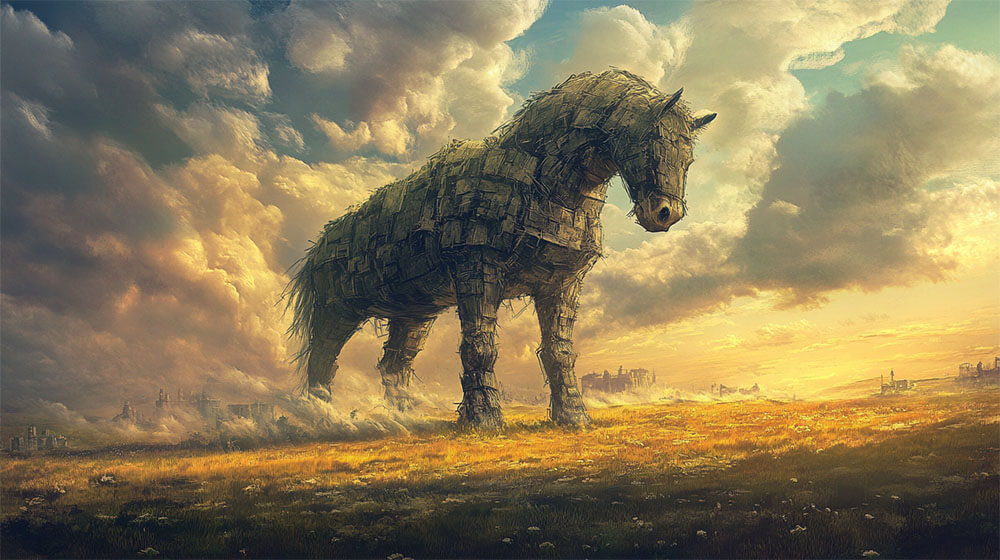
Once ideological influences took root, long-time RPG players found themselves alienated as the industry prioritized political correctness over immersive storytelling. Developers shifted their focus from engaging mechanics and world-building to appeasing activists, often at the expense of game quality. The natural result was an RPG genre that no longer felt like home to its original audience. The more studios catered to activist demands, the more they repelled their core demographic—leading to dwindling enthusiasm, declining participation, and ultimately, falling sales. What was once a thriving and passionate hobby became a shadow of its former self, consumed by ideological conformity and corporate virtue signaling.
The Importance of Male Spaces Without the Distraction of Sexual Tension
One of the most overlooked yet critical aspects of male hobbies is the need for male-only spaces where men can interact freely without the complications that arise from mixed-gender dynamics. Historically, men formed bonds, tested their skills, and built camaraderie in environments free from sexual politics and drama. Whether it was medieval warrior guilds, gentlemen’s clubs, the Boy Scouts, or sports teams, these spaces allowed men to be themselves without constantly navigating gender dynamics.
The RPG genre was no different—early gaming groups, tabletop sessions, and guilds in MMORPGs were predominantly male spaces where the focus was on gameplay, strategy, and adventure. But as more women entered these spaces, the social dynamics shifted. Some women played alongside men with no issues, but others disrupted these environments by introducing interpersonal drama, attention-seeking behavior, or outright manipulation.
I’ve personally experienced this firsthand as a GM of a WoW guild, where female members flirted with officers, created jealousy among players, and ultimately destabilized the guild. Within a month, the guild broke apart—not because of bad leadership or poor organization, but because the presence of women introduced a level of tension that didn’t exist before.
This is not an isolated incident. Many male gamers have observed how once-thriving gaming groups break apart after mixed-gender dynamics lead to internal drama. This is not misogyny; it’s simply reality—men and women interact differently, and forcing them together in competitive or hierarchical spaces often disrupts the natural order of those environments.
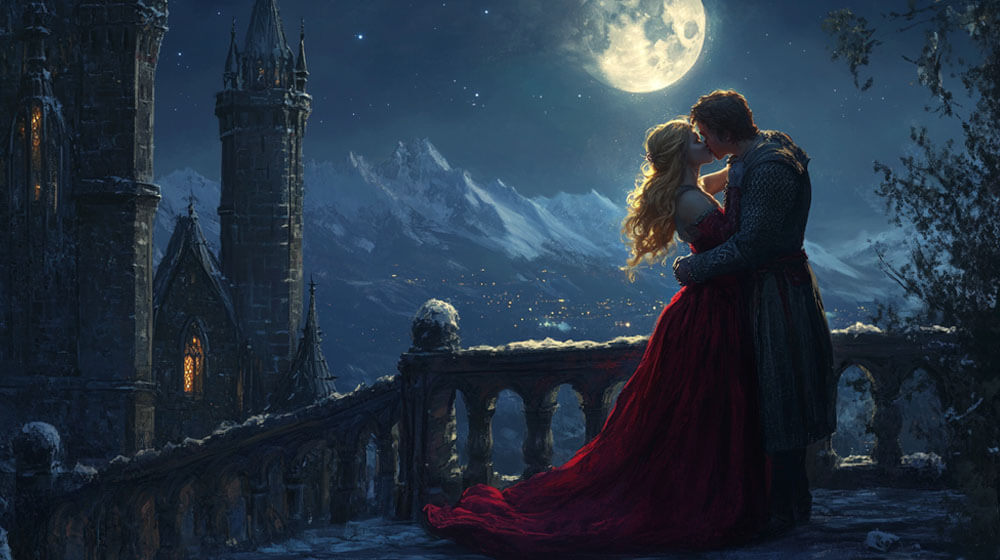
Feminism targeted and dismantled male spaces for decades, first with private gentlemen’s clubs, sports teams, and workplace dynamics, and later with video games and RPG communities. RPGs, being a relatively young medium, were slow to catch on to the dangers of ideological infiltration. Men were unsuspecting—they assumed women entering the hobby just wanted to play games. Instead, they brought activist demands, calls for inclusivity quotas, and a reshaping of the entire genre to fit feminist ideology.
The consequences of this infiltration are clear—RPGs no longer cater to their original audience, and male gamers feel increasingly alienated in a hobby they once dominated. The collapse of male spaces is not just a loss for the hobby; it is a broader cultural trend that has stripped men of vital social outlets.
Conclusion
Over the past few decades, traditionally male-dominated hobbies—including comics, sci-fi and fantasy literature, geekdom, and RPGs—have been targeted as low-hanging fruit for ideological takeover. Feminist opportunists and LGBTQ activists infiltrated these spaces under the guise of inclusion, but their true goal was not to participate—it was to reshape and control these hobbies to fit their ideological narratives.
Once feminist and intersectional ideology took root, these traditionally male spaces were deconstructed and reconstructed, stripping away the themes, aesthetics, and values that originally defined them. RPGs, once a celebration of heroism, adventure, and medieval fantasy, were transformed into platforms for activism—alienating the very audience that made the genre thrive.
The medieval fantasy setting was always designed to celebrate the hero’s journey, warfare, and noble sacrifice, themes that have captivated male players for generations. Attempts to dilute these elements in favor of modern identity politics have only led to alienation and declining engagement. If RPGs are to be great again, they must embrace the classic tropes and storytelling traditions that made them successful in the first place.
This is not just about games; it is about the broader struggle over male identity, escapism, and cultural spaces. The infiltration of feminist and DEI-driven ideology has fundamentally altered how RPGs are made, how they are marketed, and who they cater to. Many game developers assumed that accommodating these demands would bring in new players without alienating the old ones, but the opposite has happened. The original audience—the men who built and sustained the RPG genre—are walking away.
But there is hope. The tide is turning, and the cracks in the DEI and woke agenda are becoming impossible to ignore. Gamers have had enough, and studios are beginning to realize that ideological pandering is not sustainable—either creatively or financially.
RPGs will not only survive but thrive if developers return to their traditional foundations—rooted in historical accuracy, adventure, and strong, distinct sex roles that resonate with the genre’s core demographic: men.
Both the industry and players must recognize the importance of maintaining male spaces, traditional storytelling, and escapism free from modern ideological baggage. Role-playing games thrived when they celebrated adventure, heroism, and world-building rooted in historical and mythological inspiration. That formula worked for decades, and it can work again—but only if developers reject ideological interference and return to what made the genre successful in the first place.
–Wolfshead
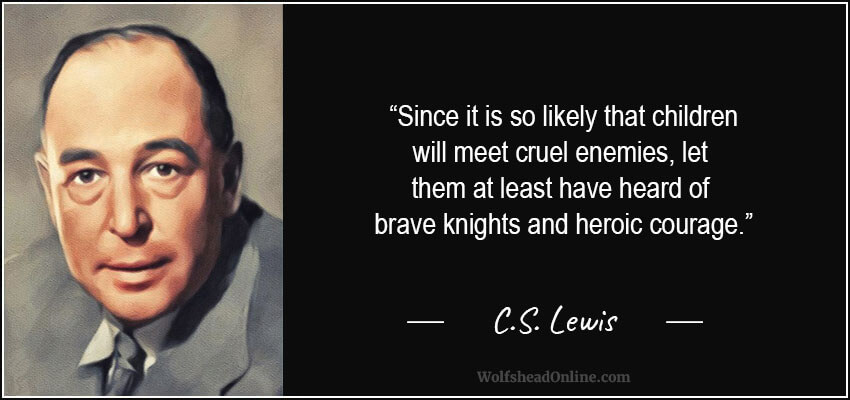

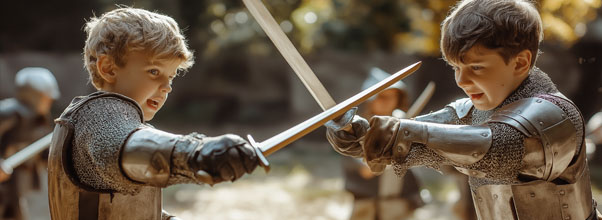
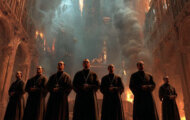


Slightly off-topic, but may I ask where the valedictory Tolkien quotation (“a man may become a hero…”, etc.) comes from? I cannot find it in his essay ‘On Fairy-stories’, where I’d assumed it would have been. The language doesn’t quite ring as his own, either.
You are right! I replaced the Tolkien quote with one from C.S. Lewis. Thanks for the heads up.
I think games with female protagonists aren’t all bad, but I can’t think I know many of them. I remember lots of guys playing Tomb Raider games mainly because of Lara Croft being the protagonist, I personally never liked it, because it just felt like a modern day female version of Indiana Jones. I was never interested in the games because of that alone.
My favorite counterpart of Tomb Raider was Prince of Persia, I really liked the character design, music, theme and everything. If there was a similar game, roughly speaking Princess of Persia and it played roughly the same way, I would probably like it too.
Another game I know and which I’m currently trying to play for the first time is Venetica, I so far, haven’t completed the intro, but want to see a bit more from the game before I will probably lose interest and uninstall it, not because it’s a bad game, but because I don’t have the time for more than 2 games anymore.
I like from the older RPGs, games like Dungeon Siege 1, 2, Baldur’s Gate 1, 2, Neverwinter Nights 1, 2, TES 3 Morrowind where you can create whatever character you like and it fits the story, that was the best way to give players the freedom to play a character they like.
But current RPG games are just horrible, I just take one look at them and I already know they aren’t meant for me and I won’t even bother with them.
I think it’s still possible to create RPGs with female protagonists that are likable, but it seems game developers either have forgotten how or they just don’t know.
Another thing I’ve been thinking to myself yesterday about this is if I were to create a fantasy RPG, what would it be, and a few points came to mind:
– it can have slavery but in a way where all races can be slavers and all races can be slaves
– there won’t be racism in the sense where Orcs hate Humans and now they go to war, but something like High Elves hate Sea Elves because of some territorial/trade dispute and this has been going on for about 800 years and they aren’t really going to war against one another, but rather have sat down on the table for talks multiple times over that course and never came to an agreement and the commoners also don’t agree, but they don’t go fighting each other, just comment on the situation like “we just don’t agree with them and we can’t seem to find an agreement” and that’s the end of it
– the enemies are something like demons, undead, parasitic insect swarm race, some rogue wizards, commanders or necromancers or something like that
– there are no real world politics into the game, there is no overabundance of certain characters with certain skin color, there are politics relative to the world that the game is set in and there is no way to use it to draw comparisons to real world politics
– the goal is to have an immersive world that doesn’t remind players of the real world in any way, I think this is a major rule for immersion – it has to draw you in in such a way that you don’t remember the real world and its problems as long as you play, but you only care about this world and its problems
– the art style of architecture, armors, weapons, hairstyles has to be simplistic and not over-exaggerated like those new games are doing it – everything is purple, fancy, even the poorest people wear fancy clothes, fancy architecture, some epic-looking weapons and armors, it has to look dull and simple and on occasions when you see a magic item or someone using magic, it really stands out, it’s not everywhere so you become desensitized with it and it doesn’t look amazing and curious when you see it in action
– it would have very humble beginnings and the character will be weak at first and enemies difficult so when power is increased, it’s actually felt and something to look forward to, not handed to you for just being there
I think these are core game designs that are personally important to me and it seems game developers have forgotten about them or just choose to ignore them. I don’t know what’s happening inside studios, but the people there seem really misguided.
Also, I don’t really think that games can go back to how they were, even if all the propaganda is removed, there is still the problem with bad game design – games are designed to look good and epic and cool, but that’s only superficial and when you play for a bit, you start seeing that the game is built on the same low-risk pattern that the games in the past 15 years have – extremely limited, extremely safe, no innovation, no freedom to explore, no freedom to fail and make a mistake, a very on-rails-experience. You take away the game’s nice graphics, take away the voice acting and replace the UI with something from 2005 and what do you get – a game from 2005 that hasn’t evolved one bit since then, in fact it has devolved into something more limited, more lazy, more soulless that I can’t justify or explain how can people accept and buy when it’s exactly the same as it was in the last 15 years.
I think one part of the reason why games have gone bad is the propaganda.
The other part is gamers being too complacent and mediocre themselves. They need to be more demanding and just not buy games when they see it’s the same pattern/template all over again. And the fact that they can’t see the patterns is what makes me think they are either uneducated on that or just ignorant or something else. And unless that changes, even if propaganda is gone, games won’t get better.
I’m very proud of this article. This thesis is something I’ve been meaning to explore for the past few years. The purpose of this article was to create an intellectual foundation for a new RPG genre that reflects the reality of men and women. Male and females are exactly the same right now in RPGs. The diversity that the left so desperately wants to promote is staring at them in the face but they are willfully blind.
Most of the medieval fantasy we know is based on Hollywood which is fake and inaccurate. WoW is a good example of superficial medieval qualities. There’s very little medieval about it.
Of course, video games do not have to be a sim of medieval life but as it stands they are not even trying to at least get many of the basics correct.
Going back to Dungeons & Dragons , the RPG as created by Cygax and Arneson was incomplete. They never anticipated that feminists would be hiding in the bushes and waiting to pounce and destroy their hobby.
The RPG genre was never created properly. It bothers me that we must go back to Dungeons & Dragons all the time because if you ask me, it was flawed from the outset. While I respect it, I do not revere it.
For most of my life, I played RPGs and they were not popular in the zeitgeist. It was only until fantasy video games became a cultural phenomenon that women got involved and the feminists and alphabet people started to strategize what they could infiltrate and destroy.
Marxist-inspired feminism and DIE needs to be wiped off the face of the planet if our world has any hope of surviving.
The bottom line is that men and women are not equal. They are different but complementary. It’s high time that we started reflecting that reality in RPGs.
This is going to happen eventually because making products that are repugnant to the target audience is unsustainable. Video game studios need to stop recruiting leftist weirdos and freaks. They need to be cleansed from the industry. Mass layoffs have been happening for the past year. We need a DOGE for the video game business. If this doesn’t happen, the industry will die.
You do realize that everything you publish here is almost like religious heresy to those who hold progressive values? I’m surprised that no-one has tried to ‘out’ or cancel you :p
Saying that, I do think the tide is turning. The silent majority are no longer so silent. DEI, feminism, LGBQT activism and critical race theory have throughly demoralized the West, particularly men who are much better able to gauge civilizational health than women. A lot of women have substituted male protection for state protection, stupidly believing that a nanny state will always work in their favor. Another indicator of female stupidity is the ideological belief that a man who claims to be a woman is really a woman. They know deep down that this is not true, but are too scared to break from the herd. This is why I am against female leadership in any kind of institution. They are simply terrible at safeguarding cultural artifacts and this is why the West is now on the back foot with regard to current global affairs, especially the effete political leaders we see in Europe.
I am not a big fan of Trump, but I appreciate his role as Hammer of the Gods. He said he was going to drain the swamp and he has done just that.
I don’t know how many years I have left on this planet. I’m going to boldly proclaim the truth with every ounce of my being. Cancel culture is over. It was all astroturfed and DOGE is exposing the depth of it. A punk who swatted over 300 people just got put in jail for years.
Feminism has its roots in witchcraft and Marxism. Most of the women agitators for the suffragette women were non-religious Jews. The 19th Amendment to the U.S. Constitution was a mistake and needs to be repealed. Female emancipation gave us Prohibition which gave us bootlegging and organized crime. Due to feminism and contraception, the West cannot replace itself and we are on the path to extinction.
Most women would rather be at home raising a family than at work in a sterile cubicle. That is what the girl boss trope rings so hollow for both females and males.
Our modern culture has been reinforcing feminist values as well. Feminists gave us the LGBTQ movement. Feminists voted for Obama and Biden. It’s time to pause and evaluate our entire culture and reject all the values destroying it.
I would like to add, the tides are turning in favor of common sense again. We must keep up the momentum. Most people go with the flow, we already talked about many spineless examples fully embracing about every ideology as long as they profit from it.
We must bring back strong male examples. The feminization already begins in school, in childhood, high school, college/university just continue it. This is a globalist thing, it is too similar across USA and Europe. Boys are mostly educated by females these days, and young teachers are often to the core so left that they are already turning socialist red. This has to stop.
DOGE, Trump, Vance, they all do their part. Now it is up to us to do one simple thing: Stand up for Christianity, common sense, Western values. Wokeism and a lot of others -isms are straight from hell and nobody should even for a moment believe calling them out would not be appropriate.
I fully support Grummz and others exposing Wokeness in Gaming. D&D/Wizards of the Coast are big, but also arrogant. You are absolutely right that fantasy can easily evolve beyond the AD&D/D&D template. It was indeed flawed from the get go and is too much based on pen & paper and dice rolls, things like “BAB” and related formulas are usually favoring evasion tanks once levels advance e.g.. It’s a major brand, but I don’t feel anything would be lost if a new fantasy gaming system would emerge.
I would like to call out AC Shadows, Avowed and Kingdom Come: Deliverance II. As I have particular love and education regarding medieval times, the woke trash Middle Ages fantasy with particularly egregious female characters only gets topped by the foul mouthed agent in Jack Reacher. I made it to episode 2 of Season 3 after I already gave up on Season 2 after episode 1. They funnily always make one great episode and the rest is trash. Season 1 was golden, but season 2 and 3 sucked already.
Let me also criticize Larian and Gamers: What is wrong there, their games are trash yet celebrated bestsellers. Baldur’s Gate seems to have the same “strong first act/prologue and then trash, just wait for Act 4” with a really terrible story and for BG even wokeness overdrive characters, all unlikable and weird.
I am looking forward to Mel Gibson’s Siege of Malta film. Kids and young men need inspiration. Not only them: An alarming study, Visegrad 24 reported that on X several times already, shows that young women in many western nations, like Germany, but also Korea, lean extremely left, while young men more and more tend towards the right end of the political spectrum.
Boys and Girls need our guidance and help. Indoctrination has gone too far. Education, not indoctrination! Left wingers never understood the difference.